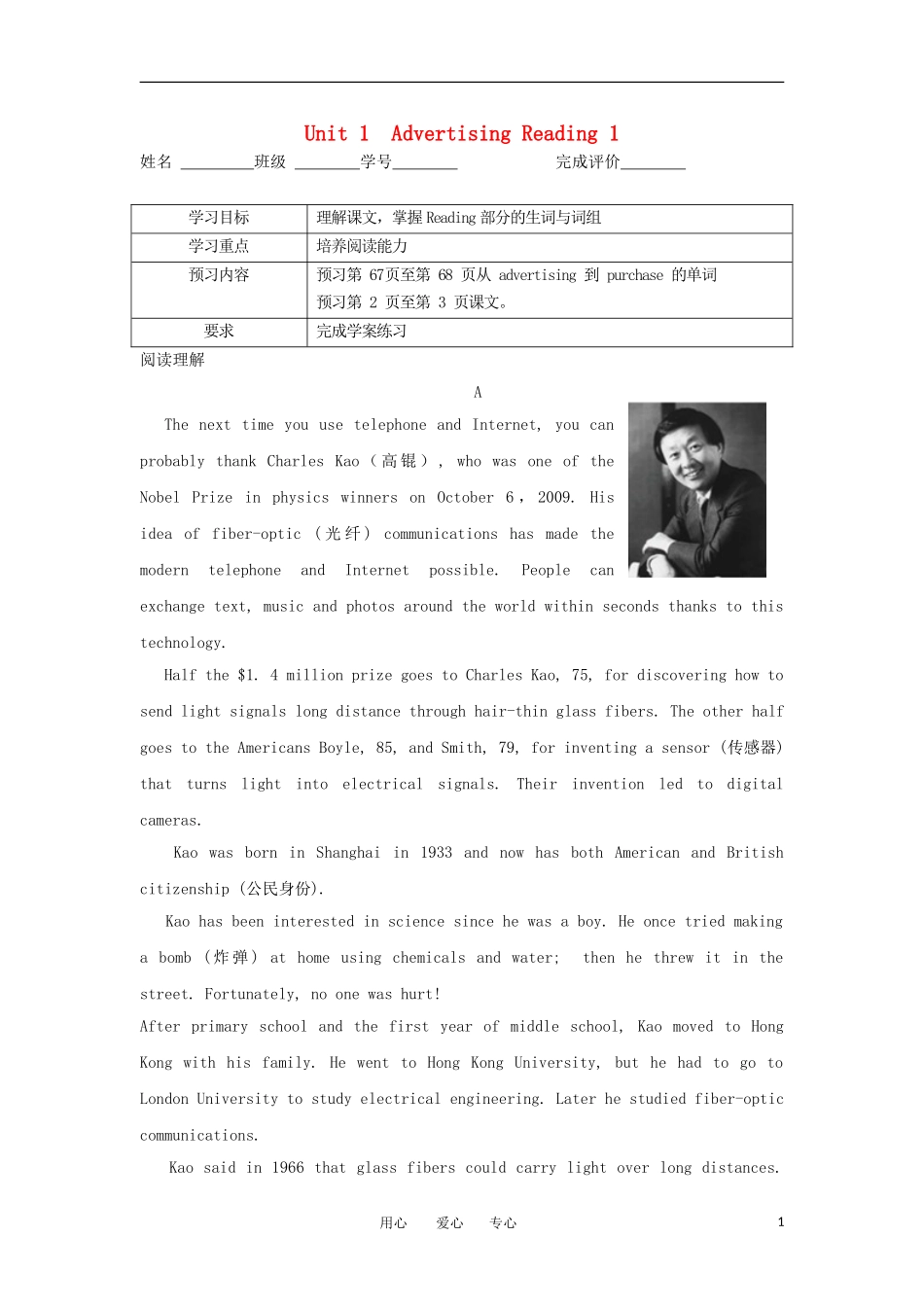Unit 1 Advertising Reading 1姓名 班级 学号 完成评价 学习目标理解课文,掌握 Reading 部分的生词与词组学习重点培养阅读能力预习内容预习第 67页至第 68 页从 advertising 到 purchase 的单词预习第 2 页至第 3 页课文。要求完成学案练习阅读理解 AThe next time you use telephone and Internet, you can probably thank Charles Kao ( 高 锟 ) , who was one of the Nobel Prize in physics winners on October 6 , 2009. His idea of fiber-optic ( 光 纤 ) communications has made the modern telephone and Internet possible. People can exchange text, music and photos around the world within seconds thanks to this technology. Half the $1. 4 million prize goes to Charles Kao, 75, for discovering how to send light signals long distance through hair-thin glass fibers. The other half goes to the Americans Boyle, 85, and Smith, 79, for inventing a sensor (传感器) that turns light into electrical signals. Their invention led to digital cameras. Kao was born in Shanghai in 1933 and now has both American and British citizenship (公民身份). Kao has been interested in science since he was a boy. He once tried making a bomb ( 炸 弹 ) at home using chemicals and water; then he threw it in the street. Fortunately, no one was hurt! After primary school and the first year of middle school, Kao moved to Hong Kong with his family. He went to Hong Kong University, but he had to go to London University to study electrical engineering. Later he studied fiber-optic communications. Kao said in 1966 that glass fibers could carry light over long distances. 用心 爱心 专心1Not many took him seriously at the time. But in 1970, researchers in the US were able to make the material. Today the fibers are used throughout the world in computer ca...


